HistoryLindos Acropolis can certainly claim, with justification, to be one of those “once seen, never forgotten” places. Only second to Rhodes Old Town as the most visited sight on the island, it sits astride a 370-foot rocky hill and is visible for miles in any direction. The climb up to the Acropolis is via many steep stone steps that start off from one of the upper back alleys in the town, but the views from the summit are reward enough for your labors. The original site consisted of the Temple of Athena Lindia and dates from the second millennium BC. This temple, along with several other stunning buildings within the Acropolis, is currently undergoing massive restoration work. After the temple was built, a large colonnaded avenue (stoa) was added, along with various vaults and cisterns, making Lindos the most important site in the entire Dodecanese. During the Byzantine period of rule, substantial fortifications were added as the Acropolis took on a more militaristic role, and after the Knights of St John commandeered the site, much of the original Hellenistic stonework was plundered to repair and expand the Byzantine fortress. Lindos was chosen for its virtually impregnable position; the hill has a sheer drop to the sea on three sides, with the town occupying the fourth lower side. Maritime invaders would have found it impossible to berth their craft due to the lack of any natural landing stages, and the climb to the summit would have been considered suicidal. |
Biblical SignificanceIn Acts, the Apostle Paul is said to have stopped there in his journey to Jerusalem. According to local tradition, Paul's ship landed in a small harbor at Lindos, which is known today as St. Paul's Harbor. Another tradition suggests that Paul conducted missionary work on the island. The text of Acts, however, does not support either of these theories, "When we had departed from them and set sail, we came by a straight course to Kos, and the next day to Rhodes, and from there to Patara." (Some ancient authorities add "and Myra.") Notice that no point of landing is named,
and the text seems to imply a departure from Rhodes without other incidents.
Of course, it is entirely possible that the ship did
dock at Lindos, and Paul may have spent a brief time on Rhodes, but
there is no evidence of that. |
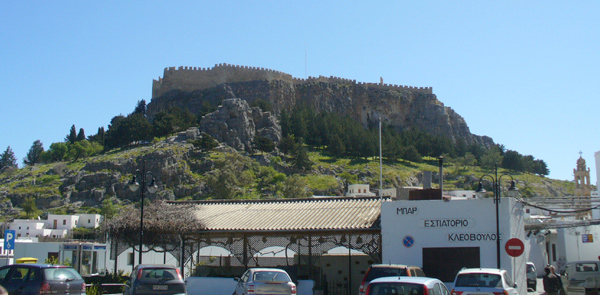 A bus ride from Rhodes City took us to the village of Lindos, with the Acropolis some 370 feet above it.
A bus ride from Rhodes City took us to the village of Lindos, with the Acropolis some 370 feet above it.
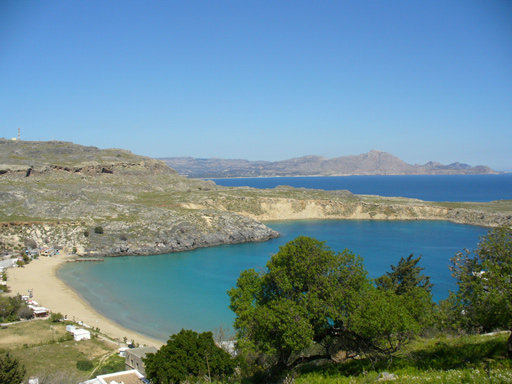 As we hiked up to the Acropolis we had some good views.
As we hiked up to the Acropolis we had some good views.
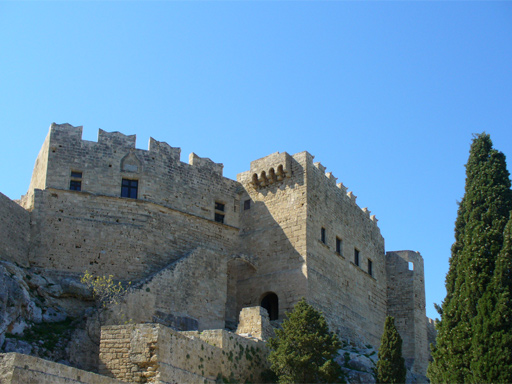
Soon we were at the base of the wall.
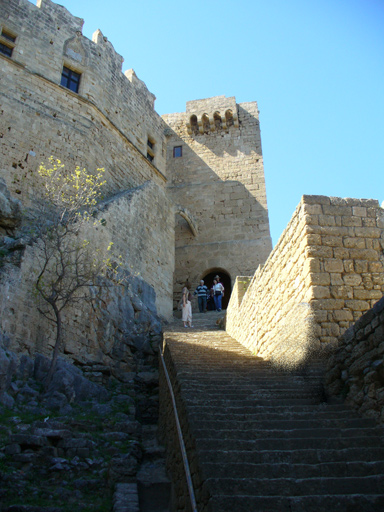 One more set of stairs to climb to get to the Acropolis.
One more set of stairs to climb to get to the Acropolis.
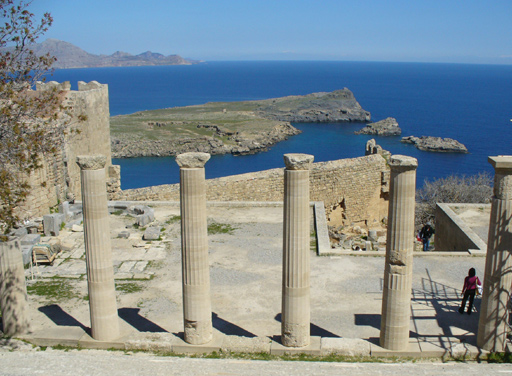 This brought us up above a row of pillars of a 3rd century BC stoa (porch.)
This brought us up above a row of pillars of a 3rd century BC stoa (porch.)
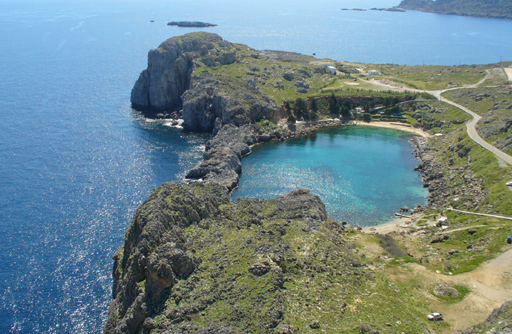 A small rock-bound natural harbor, called St. Paul's Harbor, where tradition has it that Paul landed there on his way to Jerusalem. (There is an opening behind the large rocks in the foreground.)
A small rock-bound natural harbor, called St. Paul's Harbor, where tradition has it that Paul landed there on his way to Jerusalem. (There is an opening behind the large rocks in the foreground.)
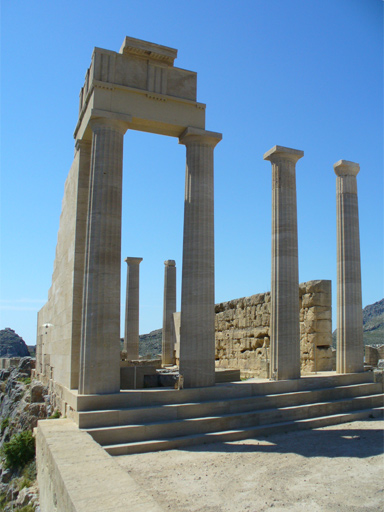 The remains of the Temple of Lindian Athena (Athena of Lindos) dating from the 4th century BC.
The remains of the Temple of Lindian Athena (Athena of Lindos) dating from the 4th century BC.
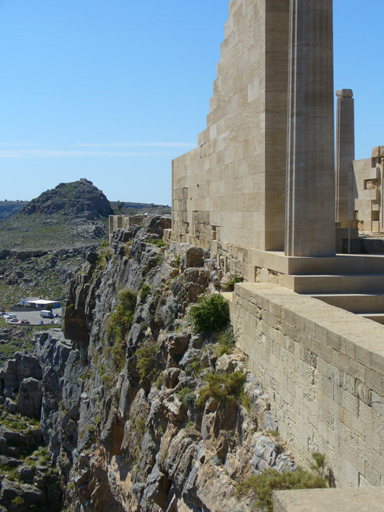 This shows how close the Temple of Athena was built to the edge of the cliff.
This shows how close the Temple of Athena was built to the edge of the cliff.
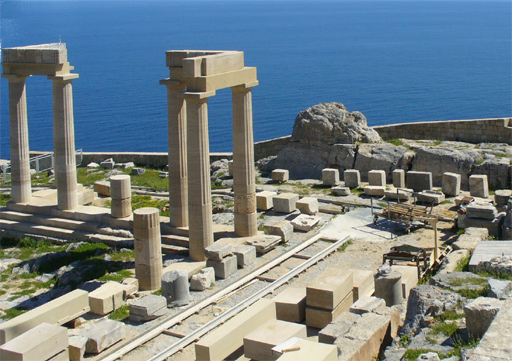 Another temple.
Another temple.
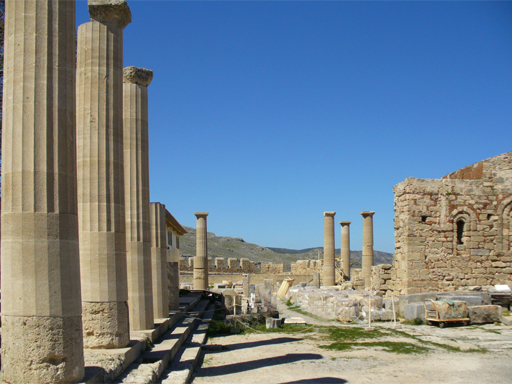 A 3rd century BC Hellenistic stoa on the left and a 13th century AD Byzantine church on the right,
A 3rd century BC Hellenistic stoa on the left and a 13th century AD Byzantine church on the right,
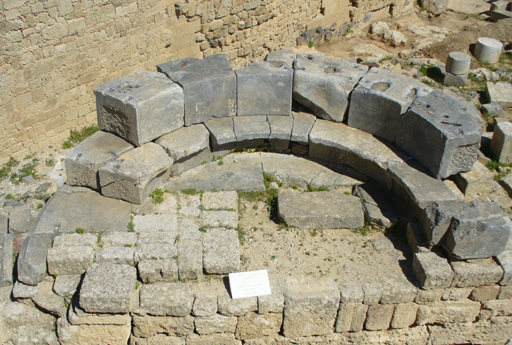 The Exedra, a stone bench that likely was literally the seat of government.
The Exedra, a stone bench that likely was literally the seat of government.
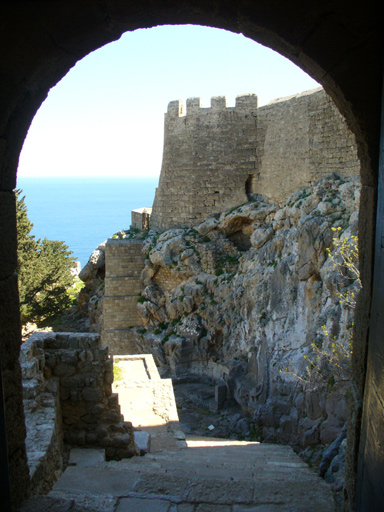 Too soon it was time to take the stairs down the hill.
Too soon it was time to take the stairs down the hill.
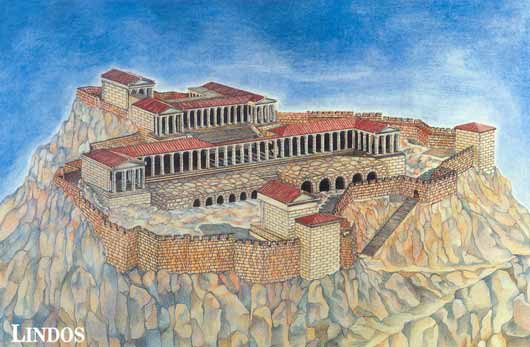 An artist's concept of the Lindos Acropolis.
An artist's concept of the Lindos Acropolis.
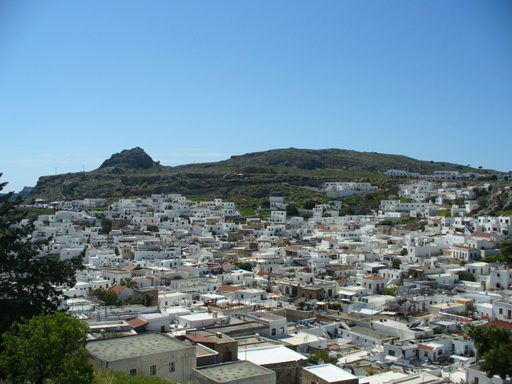 On the way down we had good views of the village of Lindos.
On the way down we had good views of the village of Lindos.
Our next stop was at Patmos
